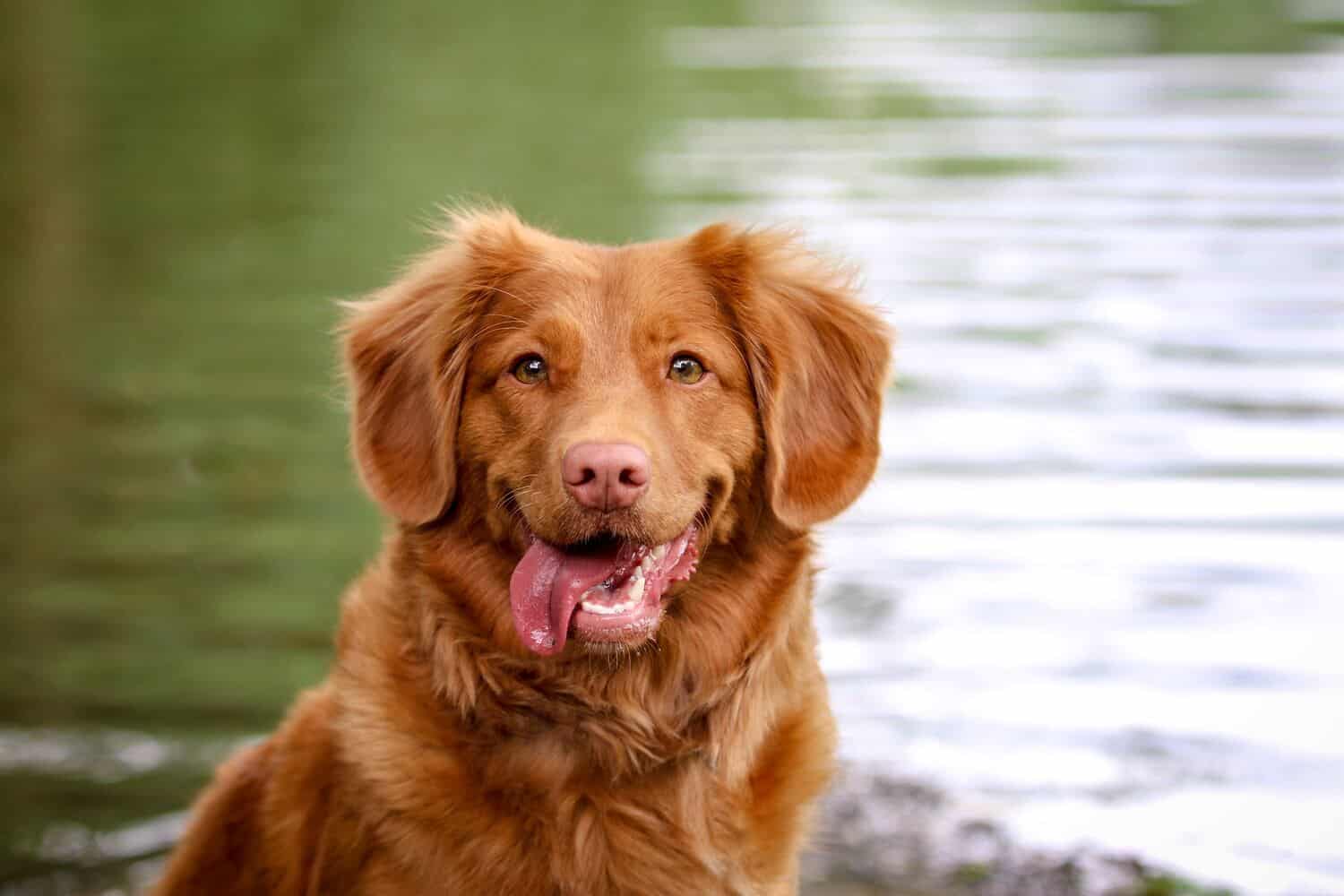| TL;DR: Puppies have two sets of teeth in their lifetime: a milk set and adult teeth. At 6-8 weeks old, they will have 28 deciduous teeth, while a complete set of 42 permanent teeth is attained by 7-8 months. Dogs have four types of teeth — incisors, canines, premolars and molars — each with a specific function. However, periodontal disease, trauma and other factors can lead to dogs losing their adult teeth. To prevent this, it’s essential to establish a regular dental care routine that includes daily toothbrushing and regular visits to the vet. |
As a dog lover, you know a pup’s loving smile is enough to melt anyone’s heart; however, what many people don’t realize is that dogs’ teeth play a crucial role in their overall health and happiness.
Sadly, oral health issues are all too common in dogs over three, with a staggering 80% of them suffering from active dental disease.
To ensure your pup’s smile stays bright and healthy, it’s good to understand their dental care requirements. In this article, we’ll dive deep into dog dentition, exploring the different types of teeth, common dental diseases and practical tips to keep your dog’s teeth in tip-top shape.
So, buckle up and get ready to discover everything you need about your furry friend’s teeth.
How Many Teeth Do Dogs Have?
Dogs, like most mammals, go through two sets of teeth during their lifetime. When puppies are born, they have no teeth. This prevents them from injuring their mother while nursing. The emergence of milk — or deciduous — teeth is an essential milestone in the weaning process, indicating that it is time to introduce other foods. As puppies mature, their deciduous teeth are replaced by permanent ones.
But how many teeth do they have in each of these two stages?
???? Puppy Teeth
Puppies typically start to develop their milk teeth when they are around 2-4 weeks old. The first teeth to emerge are the incisors, the needle-like canines and finally, the premolars.
When puppies reach 6-8 weeks, they will have 28 deciduous teeth. These teeth are razor-sharp, and every dog parent surely remembers their pups’ playful nips and bites. Those sharp teeth have a purpose: to help them chew more solid food, as their jaws are not as strong as those of adult dogs.
???? Adult Teeth
Permanent or adult teeth start developing at 12-20 weeks but usually begin to erupt when pups reach 2-4 months of age. As the body absorbs the roots of the puppy teeth, they fall out, allowing the adult teeth to emerge. However, this process can be pretty uncomfortable for pups, so they chew on anything they can get their mouths on to find relief.
The incisors are the first to be replaced at 2-5 months of age. Canines, premolars and molars will erupt at 4-7 months. By age 7-8 months old, dogs have 42 permanent teeth: 20 in the upper jaw and 22 in the lower jaw — ten more than people.
Types of Dog Teeth
Like their wolf ancestors, dogs are natural carnivores with specifically adapted teeth to fit their feeding habits. There are four types of teeth in dogs’ dentition, each with a specific function determined by its position in the mouth.
???? Incisors
The smallest teeth in a dog’s mouth, right in the front line. Dogs have 12 incisors, six in the upper jaw and six in the lower jaw. These teeth are skilled scrapers, helpful in nipping and biting into food, grooming and carrying objects around.
???? Canines
Following the incisors are the canines — four long, pointed teeth in dogs’ upper and lower jaws. These sharp fangs provide a firm grip and can easily puncture objects, making them perfect for shredding and tearing meat.
???? Premolars
Premolars are the sharp teeth at the sides of a dog’s jaw, right behind the canines. These are essential for chewing and grinding food. Adult dogs have 16 sharp premolars, eight on the top and eight on the bottom jaw. Each one of these teeth can have up to two roots, firmly anchoring them in the mouth.
| Fun fact: The 4th premolar is known as the Carnassial tooth, usually the dog’s largest tooth. Interestingly, the term comes from the French word carnassier (carnivorous), as these teeth are designed explicitly for shearing and tearing meat. |
???? Molars
Molars are located at the very back of a dog’s mouth, behind the premolars. These flat teeth play an essential role in the chewing process and are designed for grinding and breaking down large food particles — such as kibble or bones. Adult dogs have ten molars in total, with four at the top and six at the bottom, and they can have between one to three roots anchoring them in the mouth.
Why Dogs Lose Teeth
Dogs need proper dental care throughout their life. While transitioning from puppy to adult teeth is a normal part of their development, healthy adult dogs should not lose any of their teeth. If this does occur, however, it’s essential to schedule a dental visit with the vet.
The most common factors that can lead to a dog losing its adult teeth include:
1. Periodontal disease
It is a bacterial infection caused by plaque buildup. If the infection spreads, it can cause gum recession, tooth decay and eventually tooth and bone loss. Canine periodontitis is one of the most frequent but highly underdiagnosed oral diseases. However, it is preventable with the correct oral hygiene routines, which include regular brushing and veterinary dental checkups.
2. Trauma
Tooth loss can also result from traumatic injuries to the mouth or by biting down on hard — and relatively common — objects like stones, metal, or even bones. Like other dense mineral objects, beef and pork bones can be too hard, often resulting in fractures and tooth damage. Although giving your furry friend a good bone to chew on may be tempting, it’s best to avoid such hard objects to prevent tooth damage.
3. Tooth decay
Although not as common as periodontitis, dogs can also suffer from tooth decay or cavities. This happens when the tooth enamel — the layer that protects the teeth — breaks down, and teeth become vulnerable to germs and infections. It is usually related to inadequate or poor dental hygiene, hereditary predisposition, advanced age and an inappropriate diet.
Signs of Dental Problems in Dogs
The best way to keep teeth problems in check is to detect any issues as early as possible. In addition to a daily brushing routine and regular vet checkups, monitoring your dog’s teeth and behavior for early signs of trouble is highly recommended.
Dental diseases can be just as painful for dogs as they are for us and can significantly impact their overall well-being. Sometimes dogs may become irritable with dental problems, but other times, the symptoms may be subtler. Therefore, if any of the following signs appear, schedule a dental check with the vet to evaluate the best treatment:
????Bad breath, also known as halitosis (all the time, not just after meals)
????Yellow/brown teeth
????Red or bleeding gums
????Abnormal chewing, drooling, or dropping food from the mouth
????Reduced appetite or refusal to eat
????Weight loss
????Rubbing their face or pawing at their mouth
????Swelling in the areas surrounding the mouth
How To Brush Your Dogs Teeth
Good oral health is essential for dogs; prevention is critical to keeping their teeth and gums healthy. One of the most effective ways to do this is by regularly brushing their teeth. While it is recommended to start brushing their teeth when they are pups, there is always time to start!
But let’s be real; brushing a dog’s teeth can be challenging. That’s why we’ve got some tips to help make the process as enjoyable as possible for dog parents and their pups:
Reward them with treats
Patience is key. Dogs need time to get used to anything new, especially when it comes to teeth. Help them build a positive association with the process by rewarding them with plenty of praise and treats along the way.
Get them used to the process gradually
Getting them comfortable with touching their mouth is a process. Start by gently rubbing their teeth and gums with your fingers, and then move on to a soft cloth to help them get used to the sensation.
Introduce the toothbrush with excitement and positivity
Make it a fun experience for them! Once they are familiar with it, gently start touching your dog’s mouth with the toothbrush and praise them for being a good sport.
Let them taste their new toothpaste
Dog-safe toothpaste tastes like their favorite foods, such as poultry or beef. This will make brushing their teeth a treat in itself
Start with a finger toothbrush
This is a great way to get them used to the brushing sensation. Once they’re comfortable, you can upgrade to a proper dog toothbrush with a longer handle to reach all their teeth.
| In addition to toothbrushing, you can support your dog’s oral health by: ✅ Giving your dog toys designed to clean their teeth as they play. ✅ Offering treats for daily chewing to control plaque and tartar. Here’s a list of Veterinary Oral Health Council-approved treats. However, these treats can also be high in calories, so be mindful of your dog’s weight and avoid overfeeding. ✅ Limiting sugary treats to prevent the buildup of harmful bacteria on your dog’s teeth. ✅ Avoiding real bones can cause dental damage, splinters and injuries to the gums and throat. |
Final Thoughts
In conclusion, caring for your dog’s dental health is essential to being a responsible dog parent. With a mouthful of teeth, your pup relies on you to keep their teeth and gums in top condition.
Be sure to seek treatment before your pet stops eating or shows other severe symptoms. Instead, create a fun and tasty routine for regular brushing with dog-formulated toothpaste and dental check-ups. The excellent reward is a lifetime of loving doggie smiles!
| SOURCES American Veterinary Medical Foundation (2023) Pet dental care avma.org Hiscox, L. (2023) Dental Disease in Dogs vcahospitals.com Reiter, A. M. (2022) Dental Disorders of Dogs. merckvetmanual.com Shojai, A. (2023) Puppy Teething Timeline: What to Expect. thesprucepets.com Tarantino, M. (2019). How Many Teeth Do Dogs Have, and Can They Lose Them? petmd.com |





